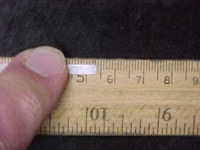Myth Takes

Repetition is often mistaken for veracity, and nowhere is that more true than with folk etymology. When a phony phrase origin takes root--especially on the internet--it ends up in millions of homes via incessantly forwarded e-mail. As Jonathon Swift once said, “Falsehood flies, and the truth comes limping after it.”
It’s surprising where some of these folk explanations take root. I’m reading Dr. Frank Luntz’s book, Words That Work, and so far I’ve come across two askew and/or erroneous stories.
On page 57, as part of his illustration that English is a “living, dynamic, shifting challenge,” he turns to the initialism OK. He hedges some bets (as we would expect from a pollster) with these words: “. . . some scholars believe that it owes its origins to the 1840 presidential campaign, representing the initials of President Van Buren’s nickname, Old Kinderhook. . . . It is also an abbreviation for the German orl korrect (all correct) that entered into the lexicon at the same time.”
Some tweaking is needed. OK developed in 1839; New York Democrats founded the OK Club to support Van Buren a full year later. And far from being of German origin, it was invented by a group of Boston twits, the urban dandies of their day. As a snotty parody of lower class speech and spelling, they concocted OK and said that it stood for the dialectical English orl korrect.
To read about the dozens of other fanciful stories “proving” where OK came from, you would do well to consult Michael Quinion’s entry in World Wide Words. Also, see two other trustworthy sources:
• The Word Detective at http://www.word-detective.com/back-q.html#ok
• Word Origins at http://www.wordorigins.org/Words/LetterO/okay.html
The second myth that Doctor Luntz includes is found on page 73: “. . . (and by the way, the term rule of thumb is based on an archaic rule where a husband was not allowed to beat his wife with anything thicker than his thumb) . . .” The fact is, people have been using body parts as an ad hoc measuring device since time immemorial. Rule in this saying is an abbreviation for ruler, not a euphemism for despotism.
• The length of the first joint of the thumb is about an inch long in an adult carpenter.
• A single pace covers about a foot.
• A long, extended step represents about a yard; ask any golfer looking for the appropriate club.
• The distance from the tip of the nose to the outstretched fingers of an adult is also approximately a yard.
• The width of the palm topped by a closed thumb is about four inches, and horses were measured by hands.
• The distance from fingertips to fingertips when your arms are stretched as wide as they can reach is roughly six feet. (Fishermen, remember?)
Reliable online references for this include
• World Wide Words at http://www.worldwidewords.org/qa/qa-rul1.htm
• Word Detective at http://www.word-detective.com/back-n.html
• Word Origins at http://www.wordorigins.org/
I’m certainly not picking on Dr. Luntz exclusively; his work just happened to be at hand. Words That Work is interesting and informative, and if truth be told, I’ve been suckered in my day by language myths (Amazons and sincere are two that come to mind).
The next time that you hear a story perhaps too slick and too good to be true, check out the home pages of the three references listed above.


Comments